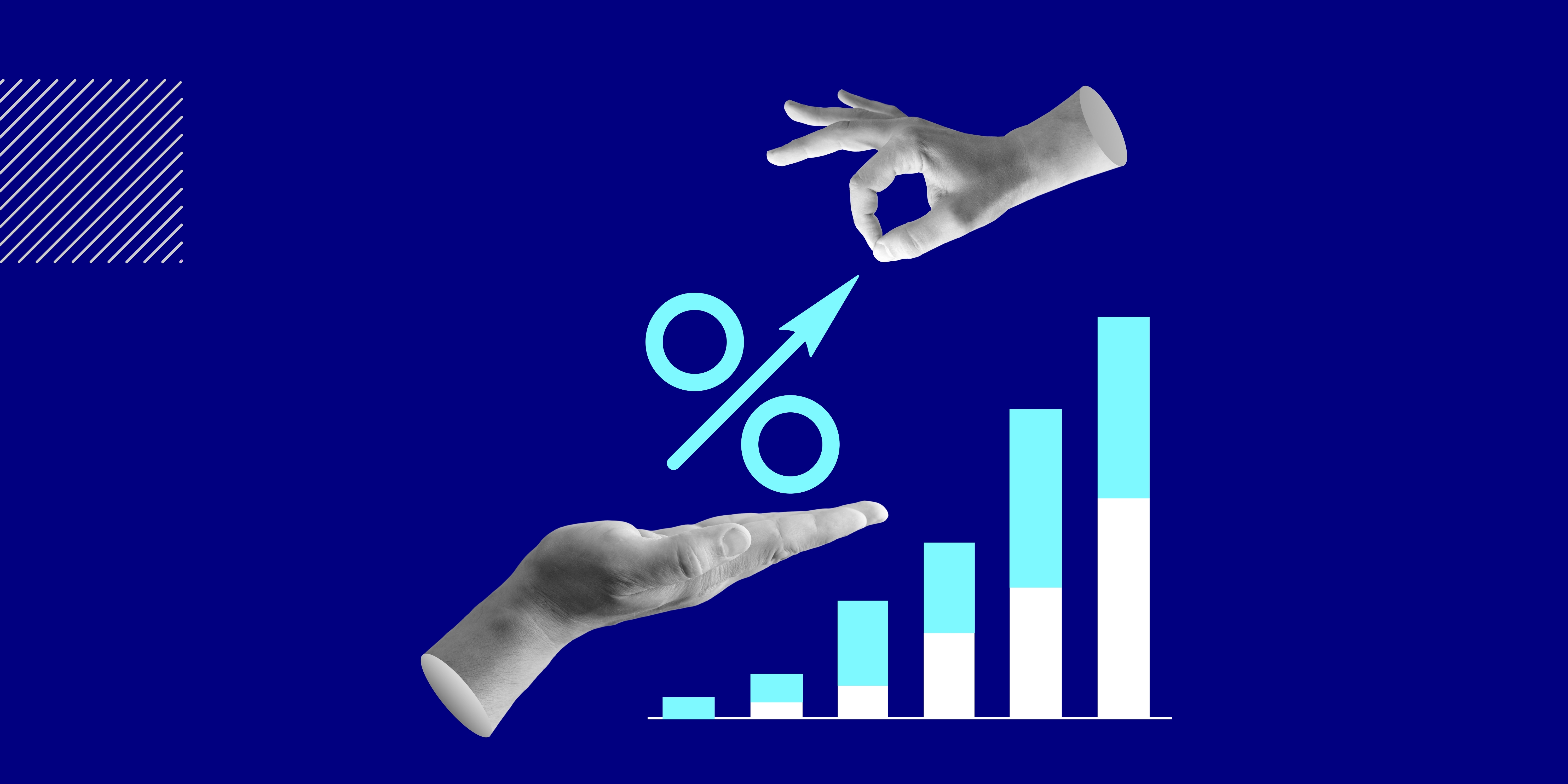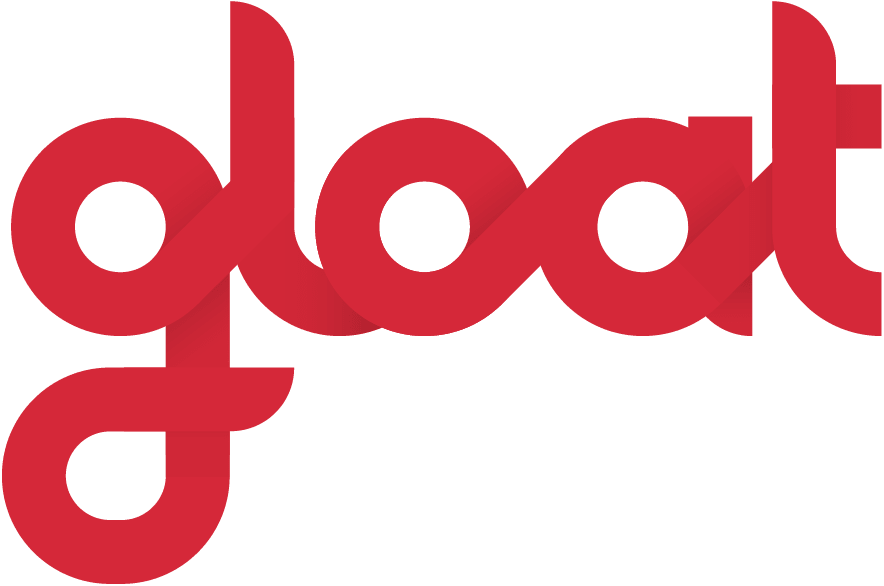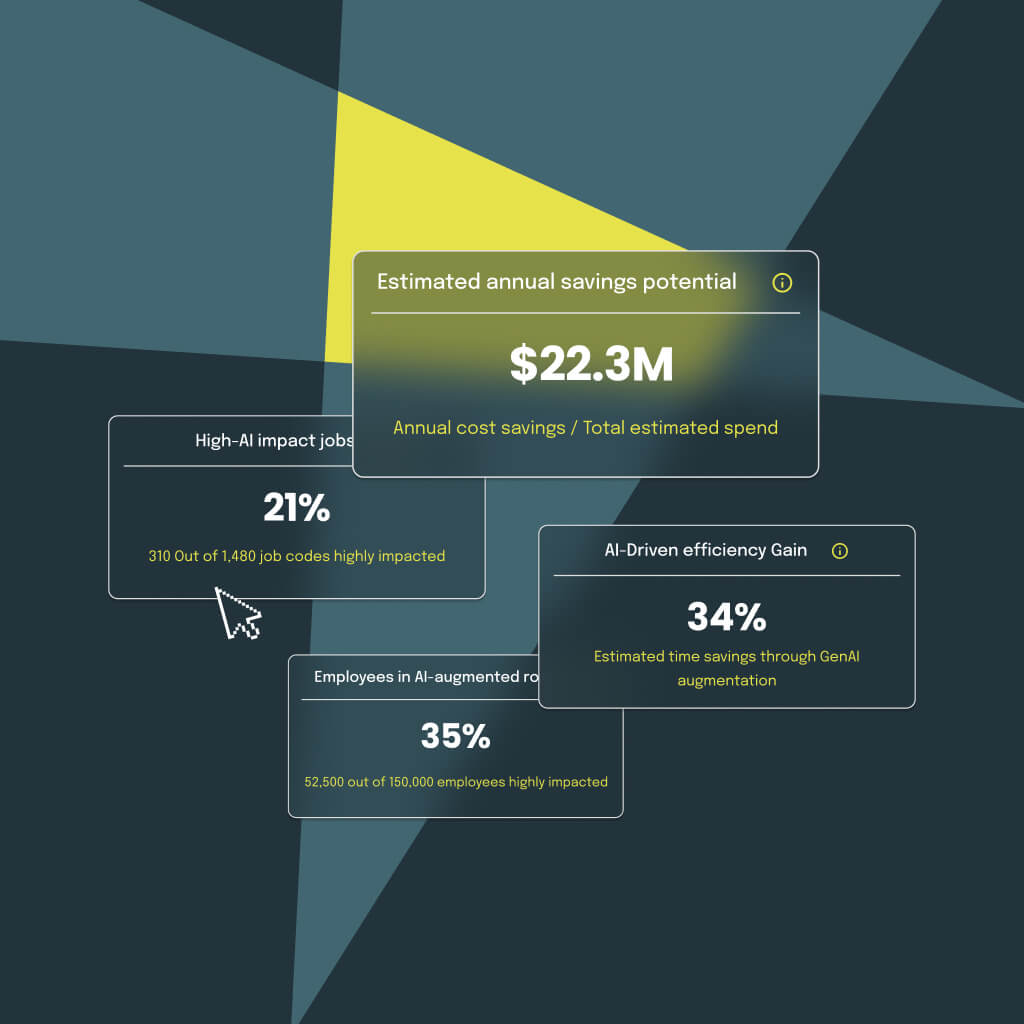Meet your most expensive tasks: how to prioritize AI by business value
Turn high-cost tasks into high-impact AI wins. Here’s how to target the work that drives real ROI.

AI has become the go-to solution for driving efficiency, but many organizations still struggle to realize its full potential and prove ROI. Why? Because they’re deploying AI without first understanding what work actually needs transforming.
Beneath every role lies a set of tasks—some repetitive, some high-cost, and many ripe for automation or augmentation. To unlock real business value, companies need to stop guessing and start zeroing in on where AI can make the greatest impact. That starts with pinpointing work that drains the most time and money.
Bridging the AI productivity gap highlights that the real challenge isn’t access to AI but strategic activation. It takes a comprehensive look at how organizations can turn AI investments into measurable impact. Now we’re diving deeper into one key strategy from that piece: prioritizing high-yield workflows to focus AI investments where they drive the greatest return.
AI deployment ≠ productivity gains
Enterprises have widely deployed AI platforms and copilots. 44% of CIOs reported AI as the single largest spend item in 2024. Yet productivity gains remain elusive.
Without tying AI directly to the most valuable work, AI efforts are misdirected toward low-impact workflows. Limited guidance has left employees using AI at a surface level, for drafting emails or summarizing meeting notes, rather than applying it to meaningfully reshape how work gets done. This misalignment between AI investment and impact is already costing companies. 42% of companies that have made significant AI investments are already abandoning their initiatives due to high costs and minimal returns.
What’s holding AI back?
#1. Companies are chasing speed over strategy
Many organizations fall into the trap of treating AI like a checkbox, rushing to implement it in easily accessible, low-risk areas without asking whether those use cases actually move the needle. Using AI to generate emails or summarize meeting notes can certainly save time, but these applications rarely justify the investment and have minimal impact on overall cost or operational efficiency. More importantly, they can create a false sense of progress, distracting leaders and team members from identifying and targeting the high-cost, high-frequency work that truly drains resources.
#2. Leaders are over-indexing on novelty
The buzz surrounding headline-grabbing AI use cases often overshadows more impactful applications of AI in everyday work. Without a clear link to cost savings, efficiency, or speed to market, enthusiasm fades. Time and budget spent on “cool applications” means fewer resources for AI applications that could materially improve workforce productivity.
#3. Departments are running isolated AI pilots without coordination
AI adoption often begins with isolated pilot programs in individual departments. Marketing may experiment with using AI for content generation, finance for forecasting models, and HR for recruiting tasks.
According to Forbes, companies that don’t break down silos and coordinate AI efforts are unlikely to capture AI’s full potential. They face redundant investments as teams purchase similar tools or build overlapping solutions without scale or shared learning. Inconsistent goals and metrics make it hard to align on success, and cross-functional insights get lost, limiting ability to replicate what works. Without a centralized strategy, initiatives often lose momentum too. Coordinated orchestration is what turns isolated experimentation into scalable, enterprise-wide transformation.
#4. A tool-first mindset rather than a task-first mindset
Organizations invest in copilots and LLM integrations without first mapping them to high-priority business needs. Pressure to “do something with AI” pushes leaders to purchase licenses for new tools without first clarifying what work they’re trying to improve.
The result is underused licenses and a focus on testing features as opposed to achieving outcomes. Without proper integration into workflows, employees are left guessing how to apply these tools, leading to inconsistent adoption and low impact. Tools alone don’t drive value; strategic deployment does.
#5. Companies lack visibility into their most costly, time-consuming tasks
Most organizations manage technology decisions at the role or department level, which obscures where the real work and real opportunity lies: in tasks. They lack visibility into which tasks consume the most time, require the most people, or drive the most cost, so they default to applying AI to what’s easy to spot.
Zoom into where the real work and ROI live
Roles are too broad and static to guide meaningful AI deployment; the real work happens at the task level. AI ROI often fails when initiatives aren’t tied to specific tasks. To uncover hidden costs, inefficiencies, and opportunities for AI to drive real impact, organizations must zoom in on the actual units of work.
Task-level insights connect the dots between effort, cost, volume, and the potential for automation or augmentation, so you can focus on AI applications that meaningfully reduce overhead, accelerate workflows, or eliminate friction across the business. They also provide visibility into what work may be augmented, replaced, or redesigned as AI continues to mature.
Focusing on high-cost, high-volume tasks, like drafting standard documentation or consolidating and formatting data for dashboards may not always seem high-profile, but they consume expensive talent’s time or occur frequently. They represent ideal opportunities for AI to deliver measurable value. McKinsey highlights service operations as an example of prime automation ground, with “high-volume, repetitive tasks and data trapped in silos.” It also clarifies that the question is no longer just what work can be automated but also what decisions can be automated.
Gloat Signal surfaces top tasks by cost and time to help you shift from intuition-based decisions to a data-backed AI strategy that maximizes ROI. It maps the work actually happening so you can pinpoint the highest-value opportunities for AI to enhance efficiency and performance. It also enables you to reallocate talent freed from tedious, repetitive tasks AI can handle, to where it’s needed most.
How to identify high-yield workflows
Pinpointing where AI can drive the most value requires organizations to evaluate:
- How often a task is performed across teams
- How much labor or resource spend is tied to it
- Whether the task can be reliably performed by AI given current capabilities
- Whether AI can enhance how humans perform this task
From costly tasks to strategic AI investments
By analyzing work being performed, Gloat Signal makes it simple to identify expensive tasks and “hot spots” where AI can boost productivity and impact. It provides clear business value, which Gartner predicts is a key driver of success or failure for agentic AI initiatives, with 40% expected to be cancelled by 2027 due to unclear ROI.
Our platform helps you visualize top tasks by estimated cost savings, potential annual savings from AI-driven automation or augmentation, and how tasks are clustered by function or role, revealing where efficiencies can be extended across your organization.
Hard ROI and soft ROI: what’s the difference?
Hard ROI has been the focus of this blog. It covers metrics most commonly used to justify AI investments like cost savings, time reductions, or increased productivity. Hard ROI is directly linked to profitability while soft ROI encompasses benefits that are more difficult to quantify like improved employee experience or a more innovative culture.
The most successful AI strategies account for both hard and soft ROI, capturing value that goes beyond the balance sheet.
Transformative outcomes beyond hard ROI
#1. Employee productivity and satisfaction
Reducing tedious, repetitive work, AI frees employees to focus on creative, strategic, and impactful tasks, which can increase employee satisfaction.
#2. Talent attraction and retention
Organizations using AI effectively are seen as modern and innovative, appealing traits for top talent. Providing employees with powerful tools to do their best work helps attract talent, increase loyalty, and reduce turnover.
#3. Workforce enablement and skill development
McKinsey reports that nearly half of employees say they want more training and support to boost AI adoption. Pairing AI with in-context prompts, guidance, and learning paths helps employees build fluency in emerging tools. The result supports a culture of continuous learning, which will be particularly critical in a fast-changing landscape.
#4. A culture of innovation
AI adoption also fosters a culture of experimentation, agility, and innovation, which can lead to faster, bolder ideas, and a workforce more resilient to change
#5. Better and faster decisions
By synthesizing data, surfacing insights, and automating reporting, AI can help teams make better decisions faster. These teams in turn unlock benefits that may not be immediately measurable, like reduced bottlenecks.
Driving both cost savings and culture gains with Gloat
Gloat helps you prioritize high-yield workflows and build the business case for AI investment with quantifiable data, but it also enables you to optimize soft ROI by empowering people and culture.
Gloat embeds AI in the flow of work, driving real adoption and employee fluency. Through personalized learning paths, mentorship, and hands-on skill-building opportunities, Gloat builds a culture of continuous development and adaptability. The platform also promotes cross-functional collaboration, agility, and resiliency by reallocating talent from lower-value tasks to higher-impact roles.
See Gloat Signal in action
AI success doesn’t come from buying the flashiest tools. It comes from understanding the work itself. When you use task-level insights to identify where AI can have the biggest impact, you turn AI from a buzzword into a business driver.
Check out how Gloat Signal can help you find your most expensive tasks and prioritize AI by business value.





